
Shower Kits Bring Warmth to Noto Peninsula Evacuees
Disaster Society- English
- 日本語
- 简体字
- 繁體字
- Français
- Español
- العربية
- Русский
Transporting Emergency Supplies by Ship
Two weeks have passed since the January 1 earthquake that brought devastation to the Noto Peninsula in Ishikawa Prefecture. Repairs to roads and transportation of residents have solved most of the problem of isolated villages, but more than 16,000 people are still staying in shelters including schools and community centers. There is no access to water across almost the whole area of six municipalities—Wajima, Suzu, Nanao, Noto, Anamizu, and Shika—and many roads are impassable due to cracks and collapsed ground, so there is no end in sight for reconstruction work.
Nippon Foundation staff members have been involved in relief activities in the area from the beginning. After surveying the needs of residents and local authorities, the organization has deployed the Ferry Aguni, a ship enabling the rapid transportation of a large amount of emergency supplies. Using its extensive network of contacts in the marine field, the foundation chartered this 462-ton roll-on/roll-off vessel capable of carrying trucks loaded with goods. As port facilities in the area suffered earthquake and tsunami damage, it is currently difficult to secure laborers to load, unload, or otherwise handle cargo, but ready-loaded trucks can head directly for disaster areas and quickly deliver their supplies.
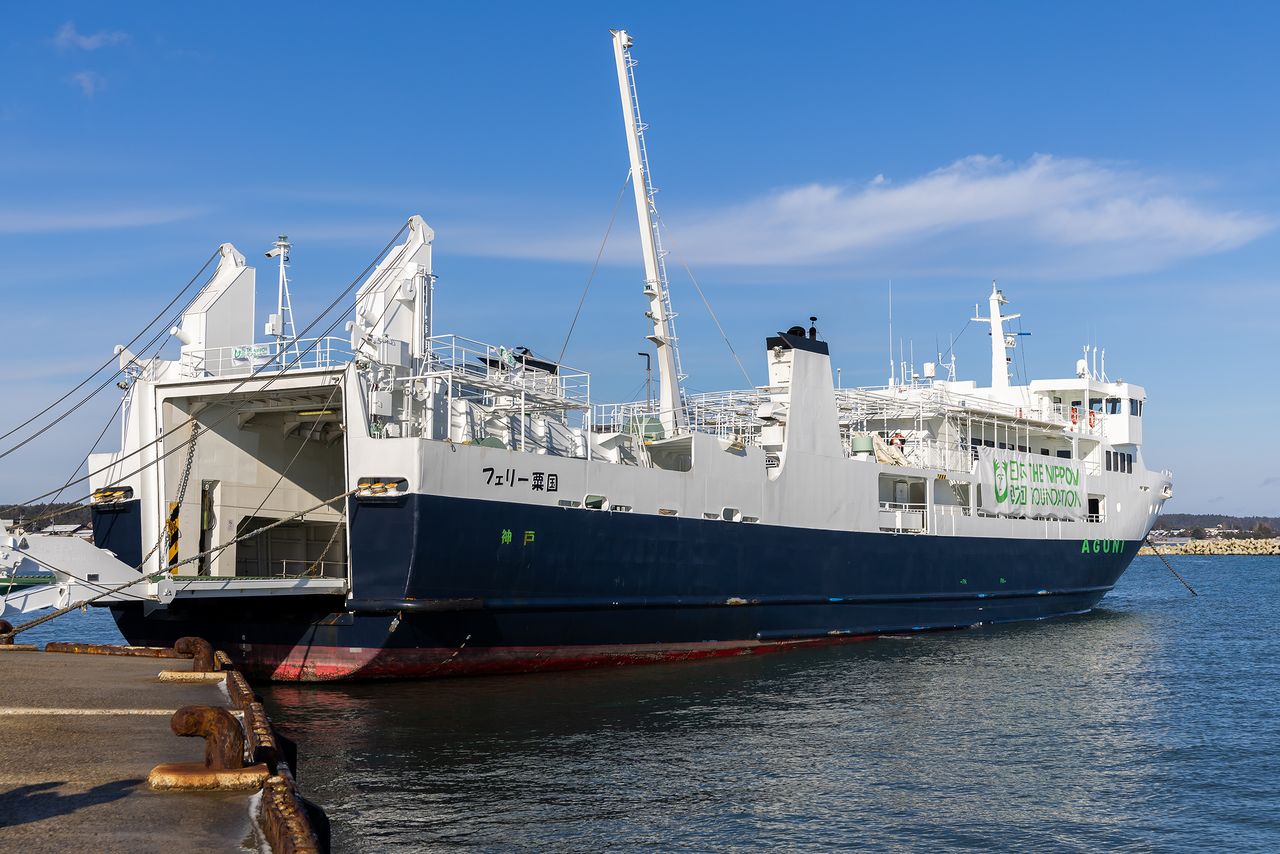
The Ferry Aguni displays a Nippon Foundation banner. (© Hashino Yukinori)
Since its first voyage on January 10 from Kanazawa to Wajima, carrying 2,000 liters of kerosene, 1,000 liters of diesel oil, and five power generators, the ferry has been traveling back and forth between the relatively unaffected Kanazawa port and impacted areas almost every day. While the initial charter was until January 20, the need for marine deliveries is expected to continue, so the foundation is considering extending it until the end of the month.
Unno Mitsuyuki, a Nippon Foundation executive director, states, “We intend to provide ongoing support. Based on consideration of the long-term picture until the end of winter, we’ll adjust our plans to meet needs for assistance.”

Unno Mitsuyuki of the Nippon Foundation stands in front of the Ferry Aguni. (© Hashino Yukinori)
Crossing the Sea of Japan in Winter
It was still pitch black at Kanazawa Port in the early hours of January 14, where 10 trucks boarded the Ferry Aguni in turn. Their destination was Suzu at the tip of the Noto Peninsula, which suffered severe damage and is difficult to access. Their main cargo consisted of 10 shower kits and 30 hand-washing stands produced by the Tokyo company Wota, which specializes in water-related products. By filtering water, so it can be reused several times, this equipment allows for plentiful use of water, even when supplies have been cut off. Other goods included 1,000 towels from the famed terrycloth production center of Imabari, Ehime Prefecture, and two tons of water tanks.
Unno notes, “We knew that while cooperating with local authorities from the time of the disaster, and conducting activities in the area, we needed to support improvements in the quality of life for evacuees. To deal with hygiene issues, we worked with Wota to procure a hundred shower kits from across the country. Of these, thirty each are for Suzu and Wajima, and seven each for Nanao, Noto, Shika, and Anamizu. The remaining twelve will be installed at medical facilities that need them.”
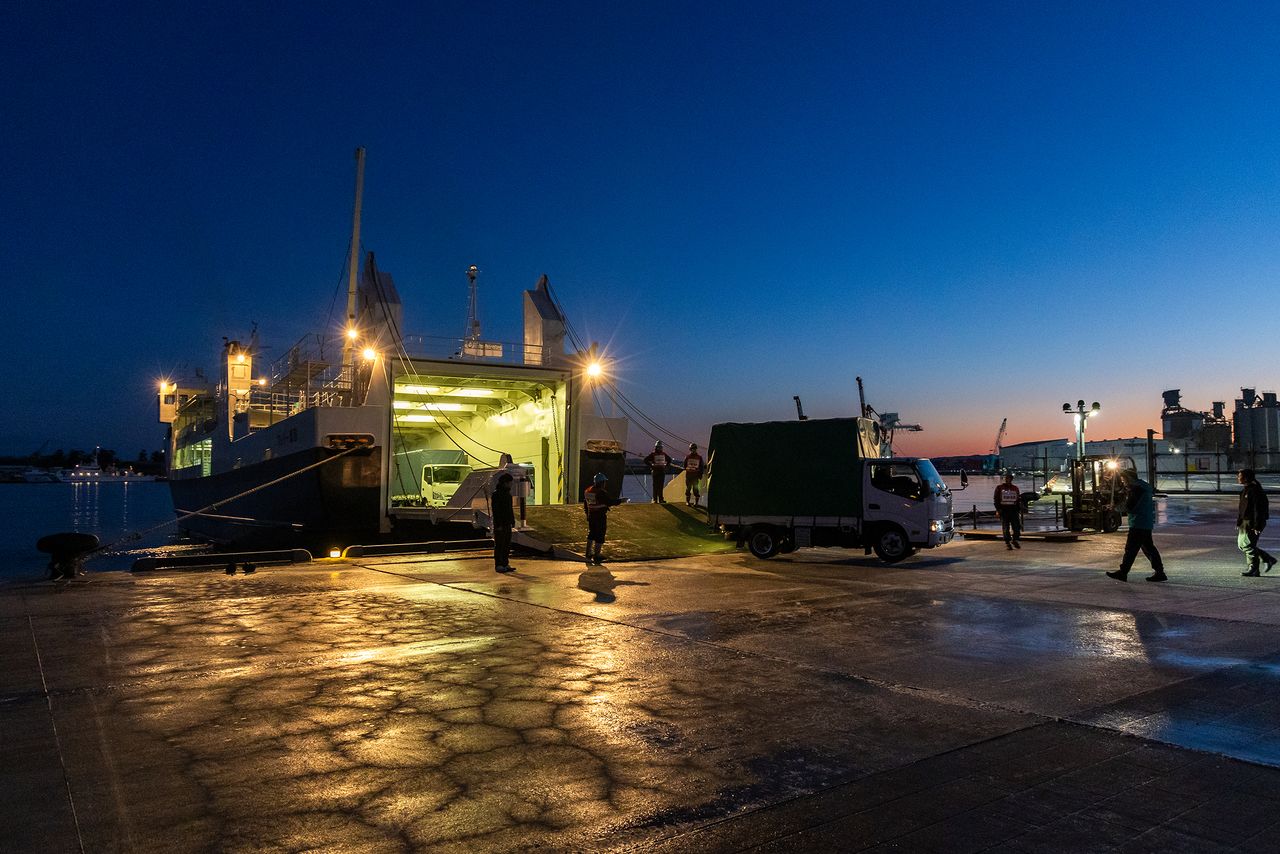
Trucks loaded with supplies board the ferry amid subzero temperatures at Kanazawa Port. (© Hashino Yukinori)
The ferry left port at 6:45 in the morning, before the dawn. Fine weather meant the water was calm that day, but I heard there were rough seas on the first trip to Wajima. The Sea of Japan is known for its turbulence in winter, so one has to respect the crew and support workers delivering supplies almost every day.
It takes about seven hours to travel from Kanazawa to Iida Port in Suzu, and the ship arrived just ahead of schedule at 1:30 in the afternoon. There were cracks and collapsed land everywhere in the port, highlighting the advantages of a ferry, which allows cargo trucks to drive straight off without the need for cranes.
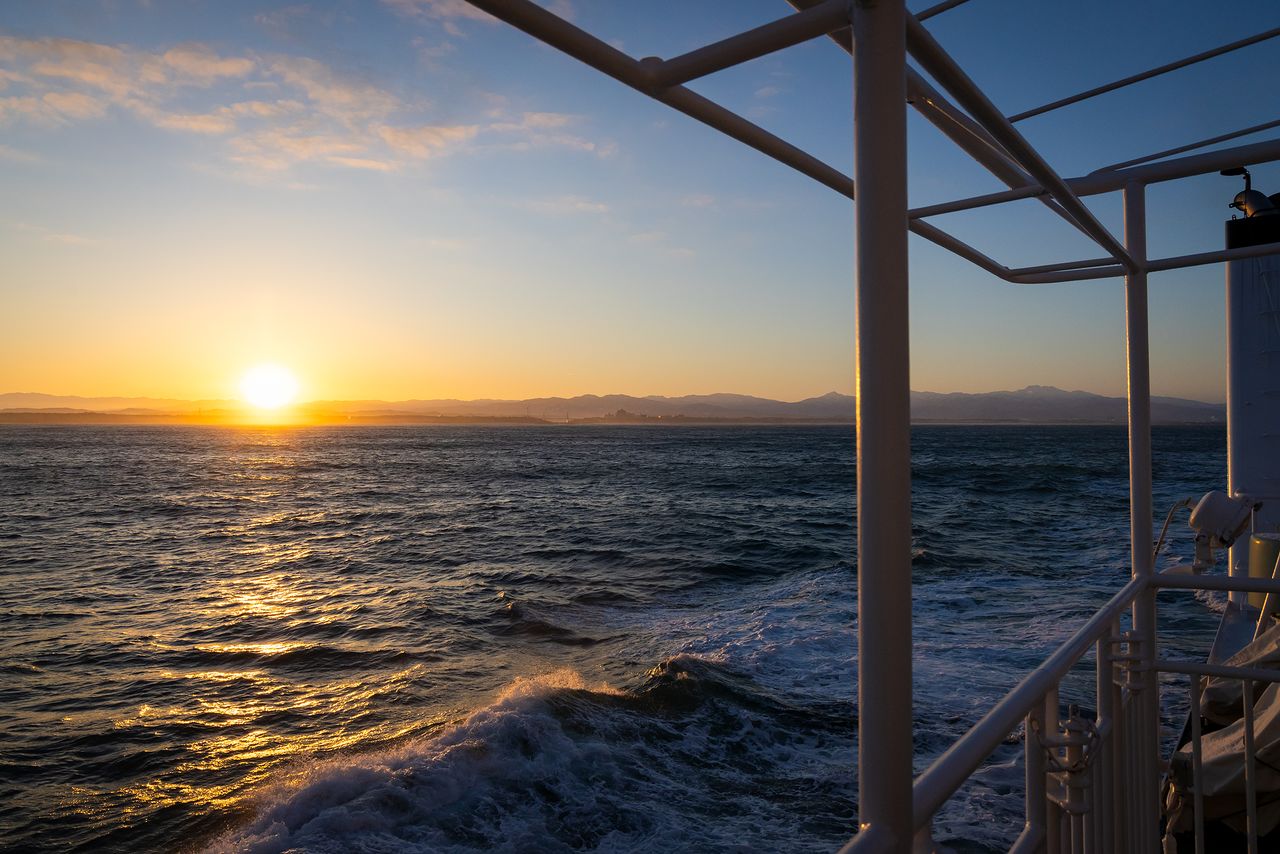
Sunrise over the Sea of Japan, as viewed from the ferry. (Courtesy Nippon Foundation)
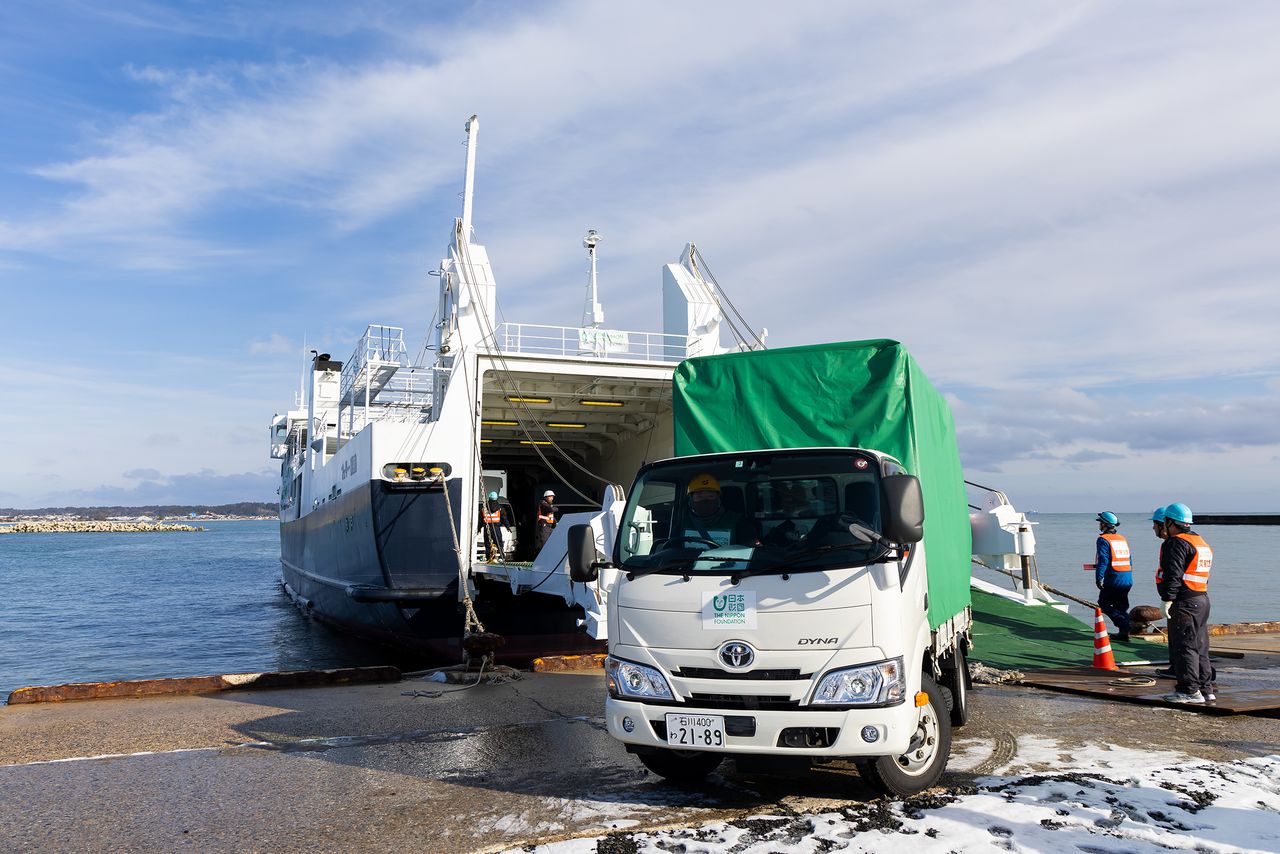
Trucks arrive in turn at Iida Port, and head straight for where they are needed. (© Hashino Yukinori)
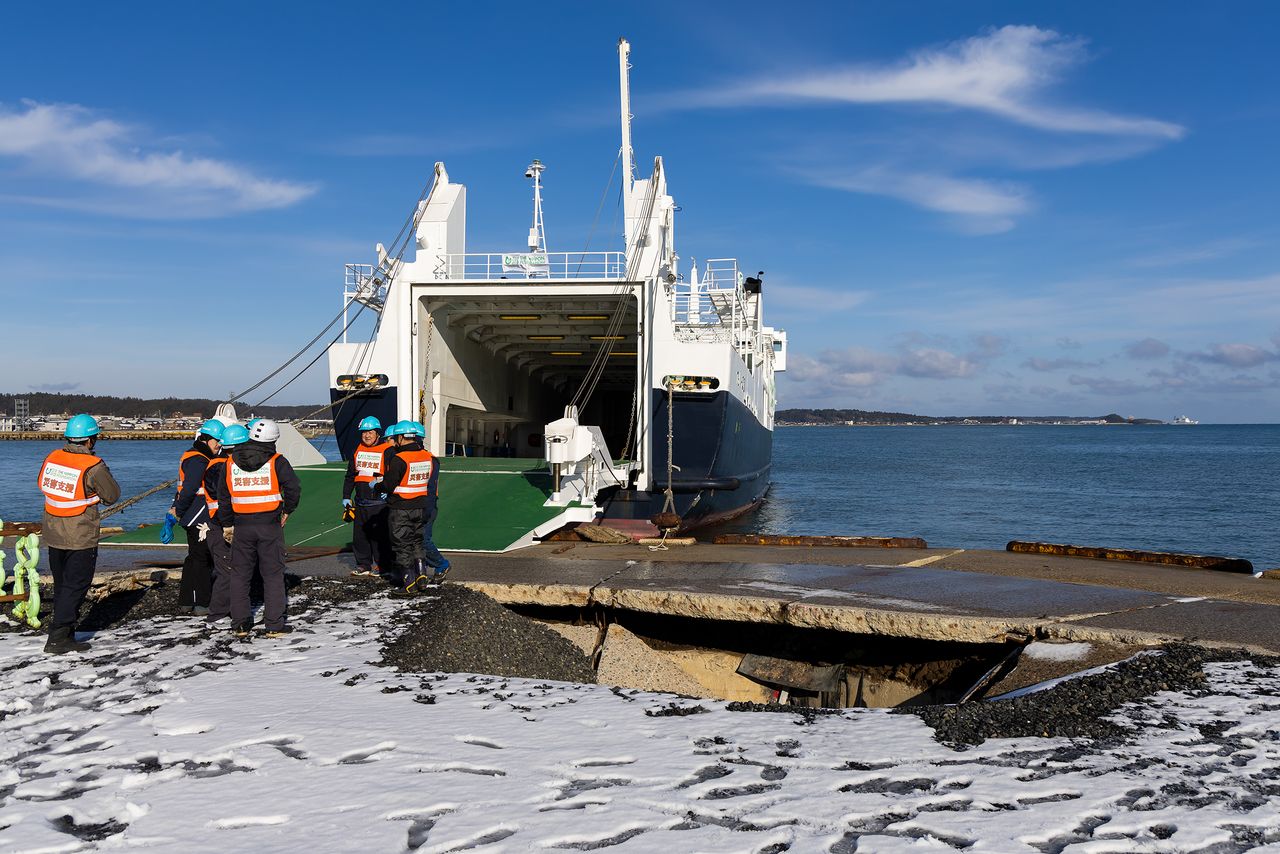
There is even collapsed ground right next to where the ferry reaches land. (© Hashino Yukinori)
Easy-to-Install Shower Kits
Shower kits were to be installed at Takojima Elementary School, now serving as a shelter for almost 300 people, while hand-washing stands were set for Suzu City Hall and elsewhere. The school was around five or six kilometers from Iida Port. Even so, rerouting to avoid blockages while traveling on rough roads laid down as part of emergency construction work, without traffic lights at crossroads, the journey took nearly 20 minutes. Viewed from the vehicle window, in some areas widespread building collapses were evident, while other zones showed little damage; the Takojima area fell in the former category.
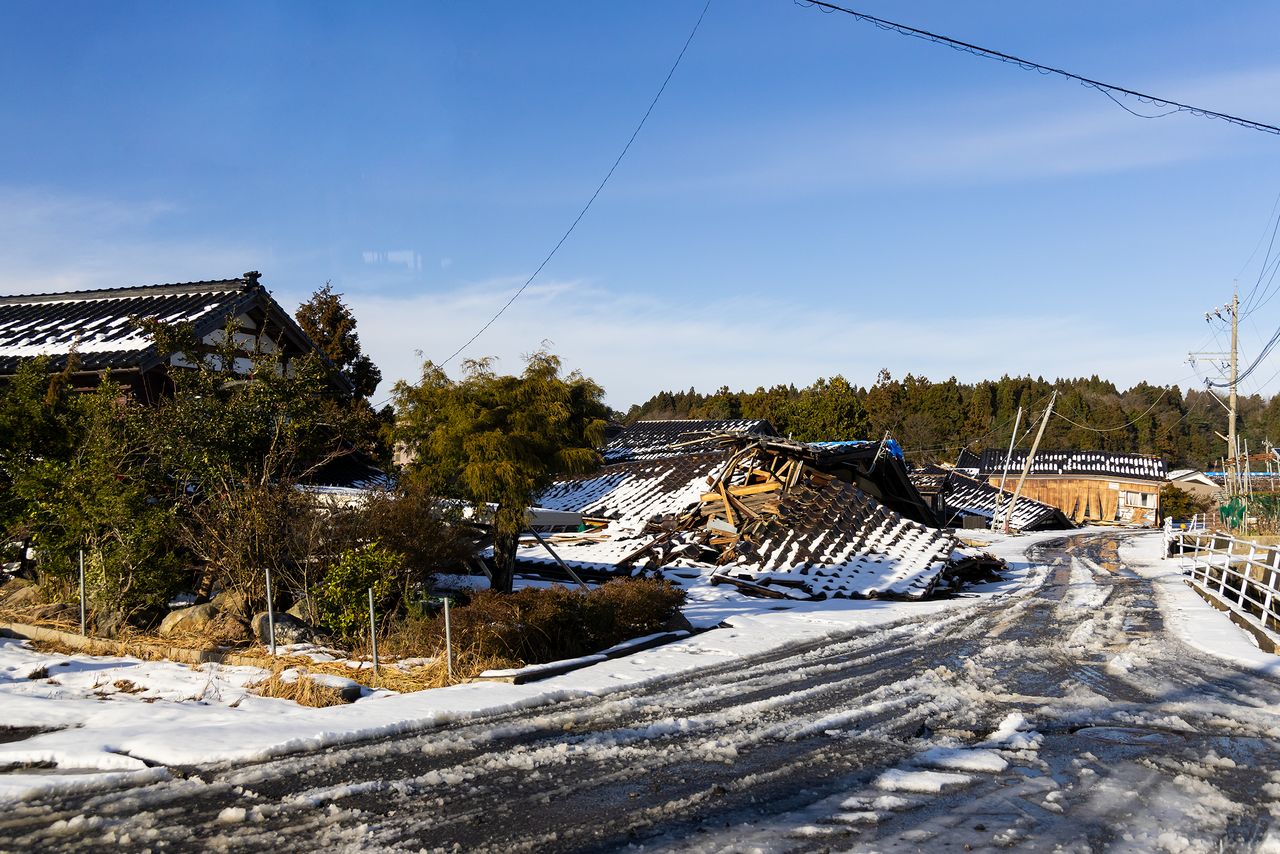
Signs of earthquake damage taken from the vehicle window. (© Hashino Yukinori)
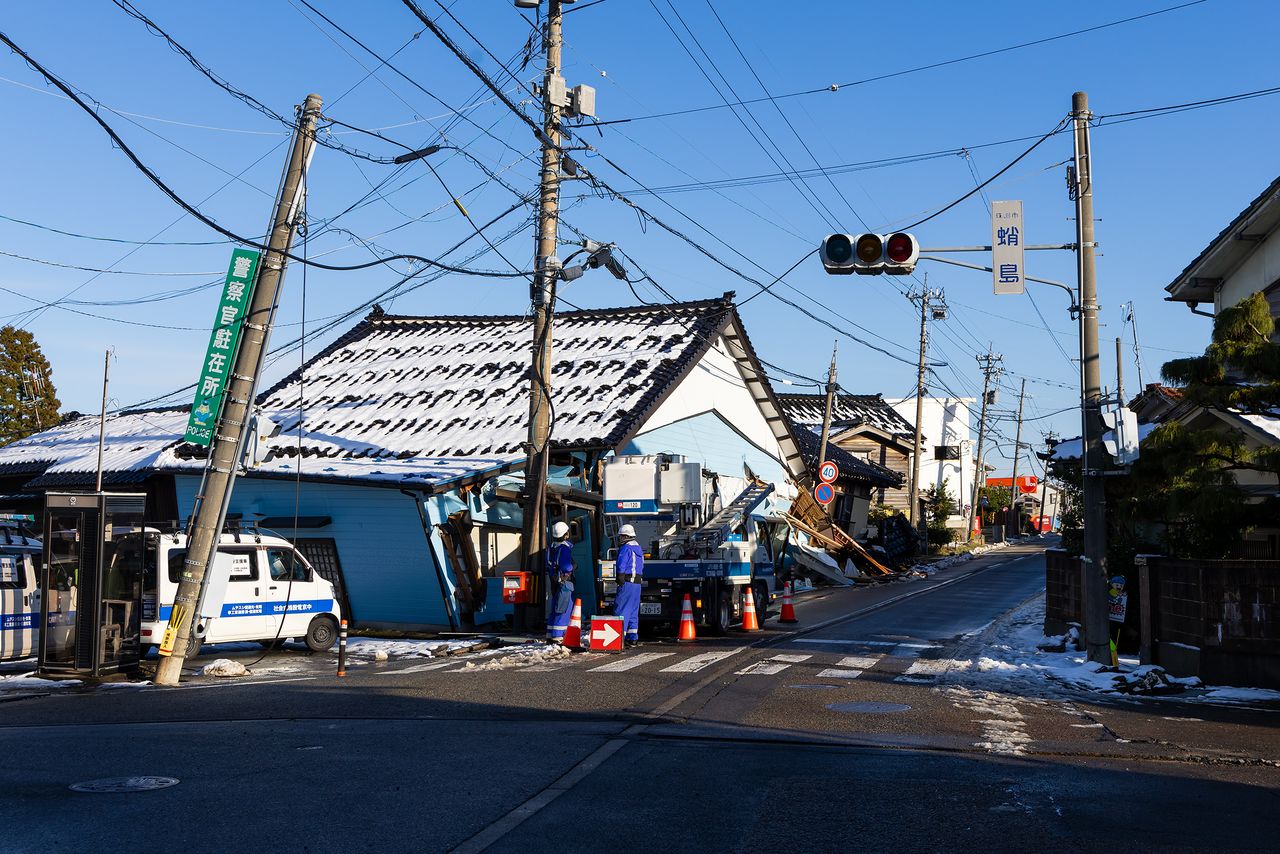
Destruction at the crossing nearest the elementary school. (© Hashino Yukinori)
Unloading began right away, with the first priority being the outdoor installation of kerosene-powered water heaters. The shower kits were then carried through to the science room, which had been converted into a shower area. Two adults could set up one of these tent-style kits in 15 minutes.
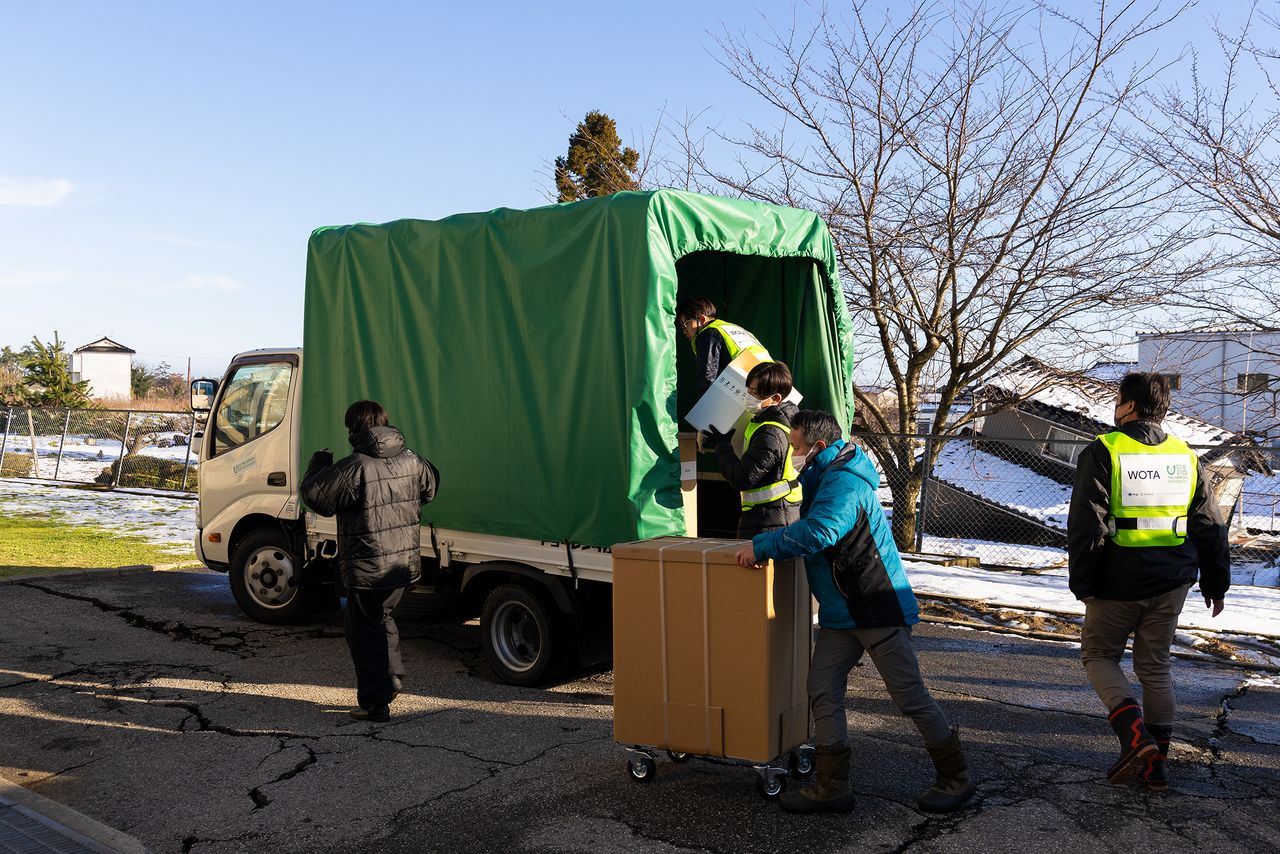
Unloading behind the school building. Here too, damage is visible. (© Hashino Yukinori)
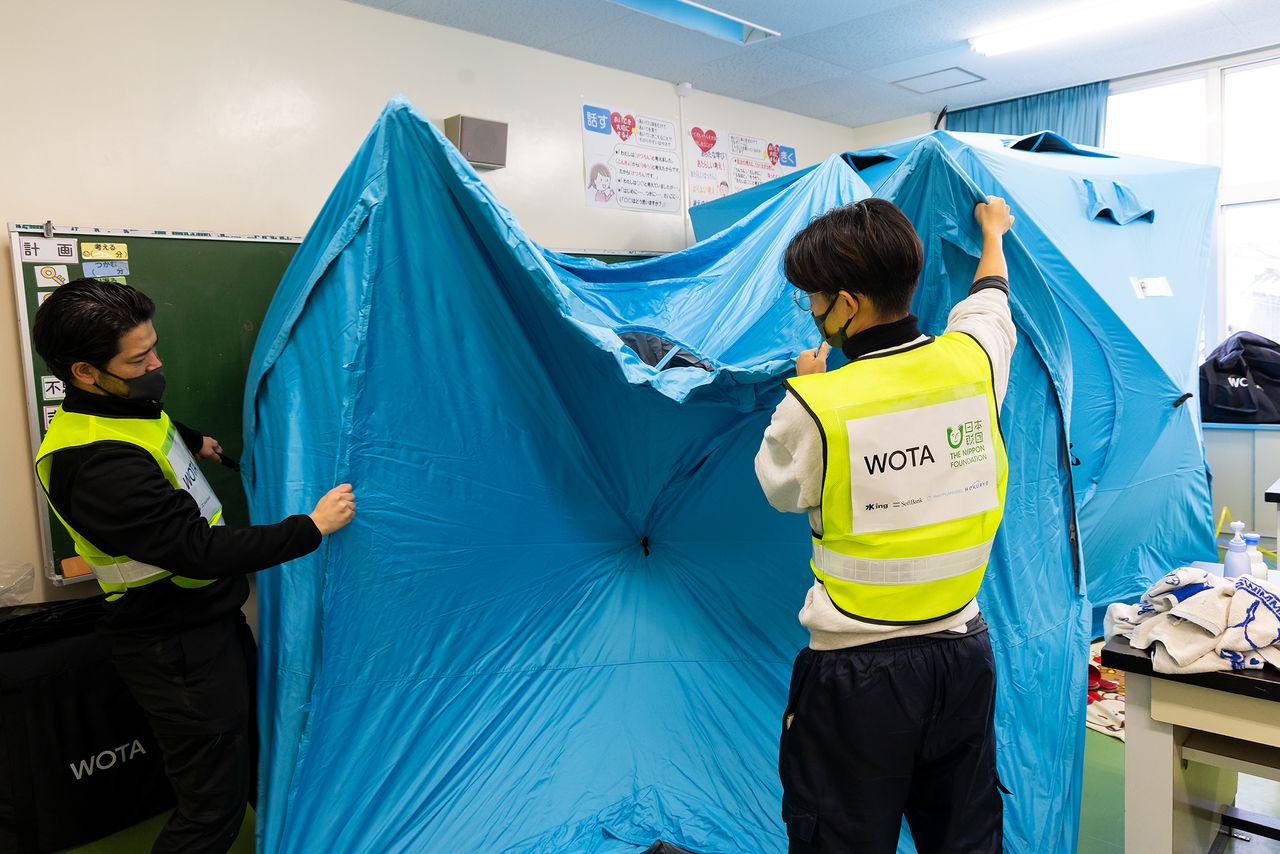
The tent-style shower kits were easy to set up. (© Hashino Yukinori)
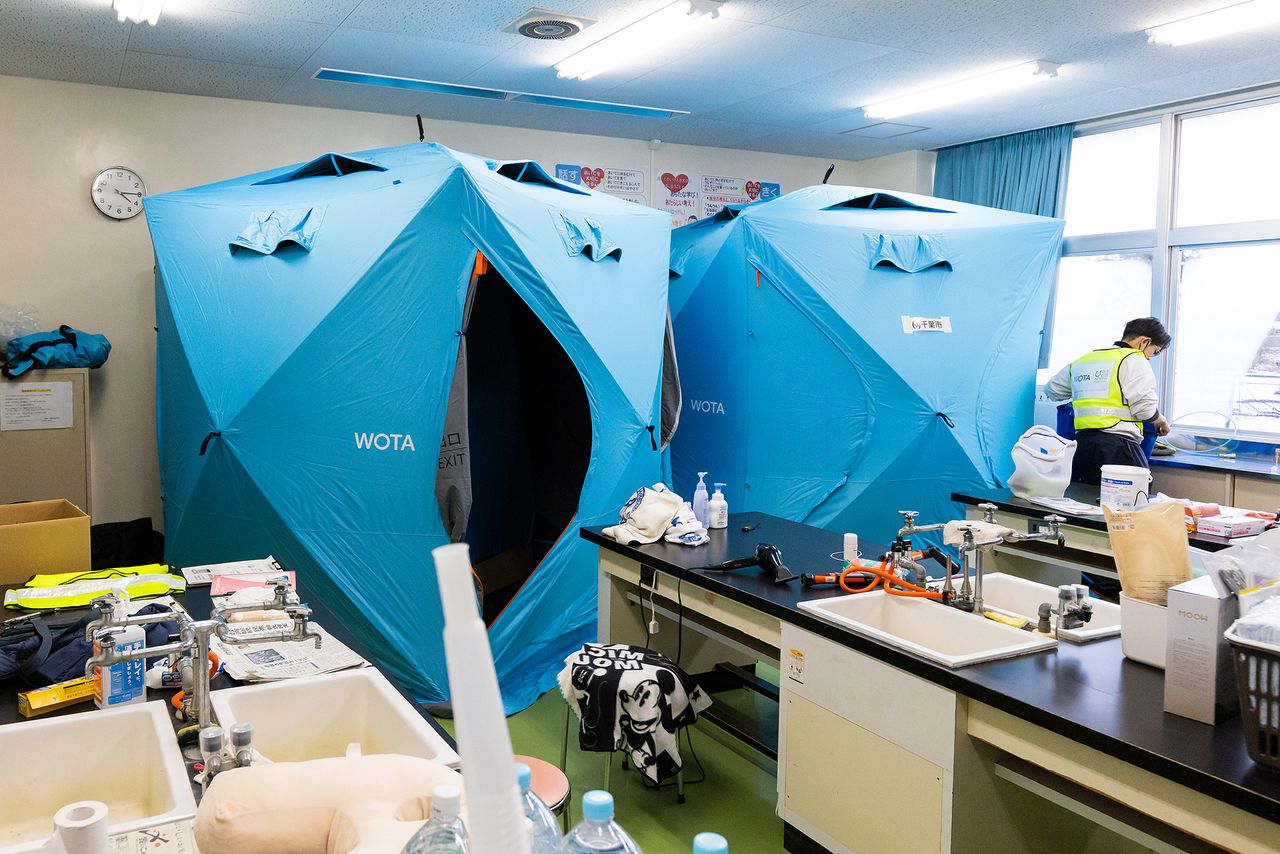
Shower kits lined up in the science room. (© Hashino Yukinori)
Comfort and Peace of Mind
At this shelter, there were baths set up by the Self-Defense Forces, but while these are good for warming people up, soap is not allowed. The Wota Box at the heart of the shower kits is a portable water recycling system that means that with 100 liters of water to start with, more than 98% can be reused. This makes it possible to wash in hot water, using soap and shampoo, without worrying about using up the water.
A man in his seventies listening to the explanation expresses his relief that he would be able to use the shower as much as he liked.
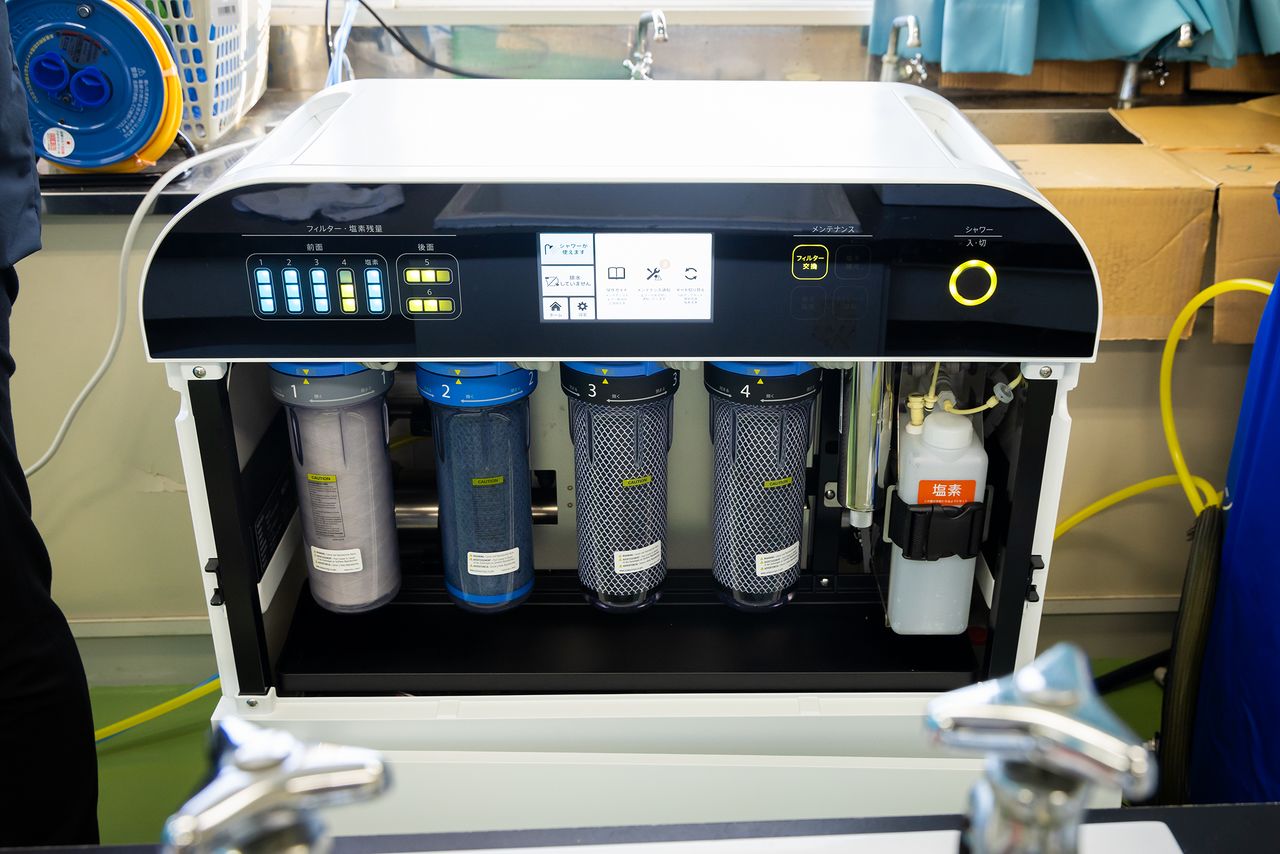
The inside of a Wota Box. After shower wastewater passes through six filters, it is sufficiently purified that it can harmlessly enter both mouth and eyes. (© Hashino Yukinori)
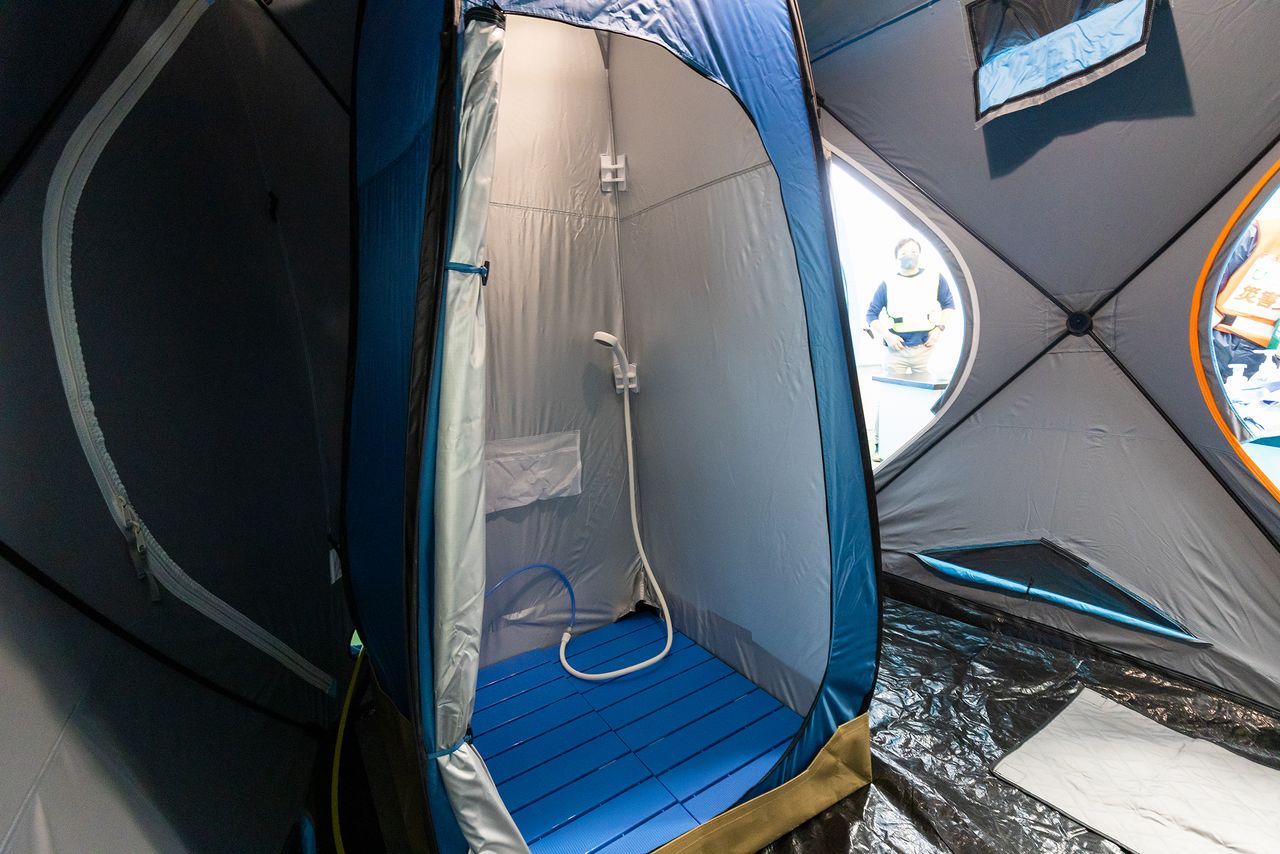
Inside the tent is a shower booth and changing area. In a shared living facility, being able to get dressed and undressed in one’s own space provides peace of mind. (© Hashino Yukinori)
Having tried the shower kit out, a woman in her sixties expresses her happiness at having a hot shower that would help her to sleep soundly.
A man in his fifties managing the shower room shows us a list with reservations for 15 minutes each that was packed with names. It showed how much the refugees welcomed the shower kits. He says, “We’re grateful for the SDF baths, but I’d heard women especially weren’t keen on getting into large, shared baths, and they’re more at ease in individual showers. I’m happy too seeing the refreshed, smiling faces of people coming out.”
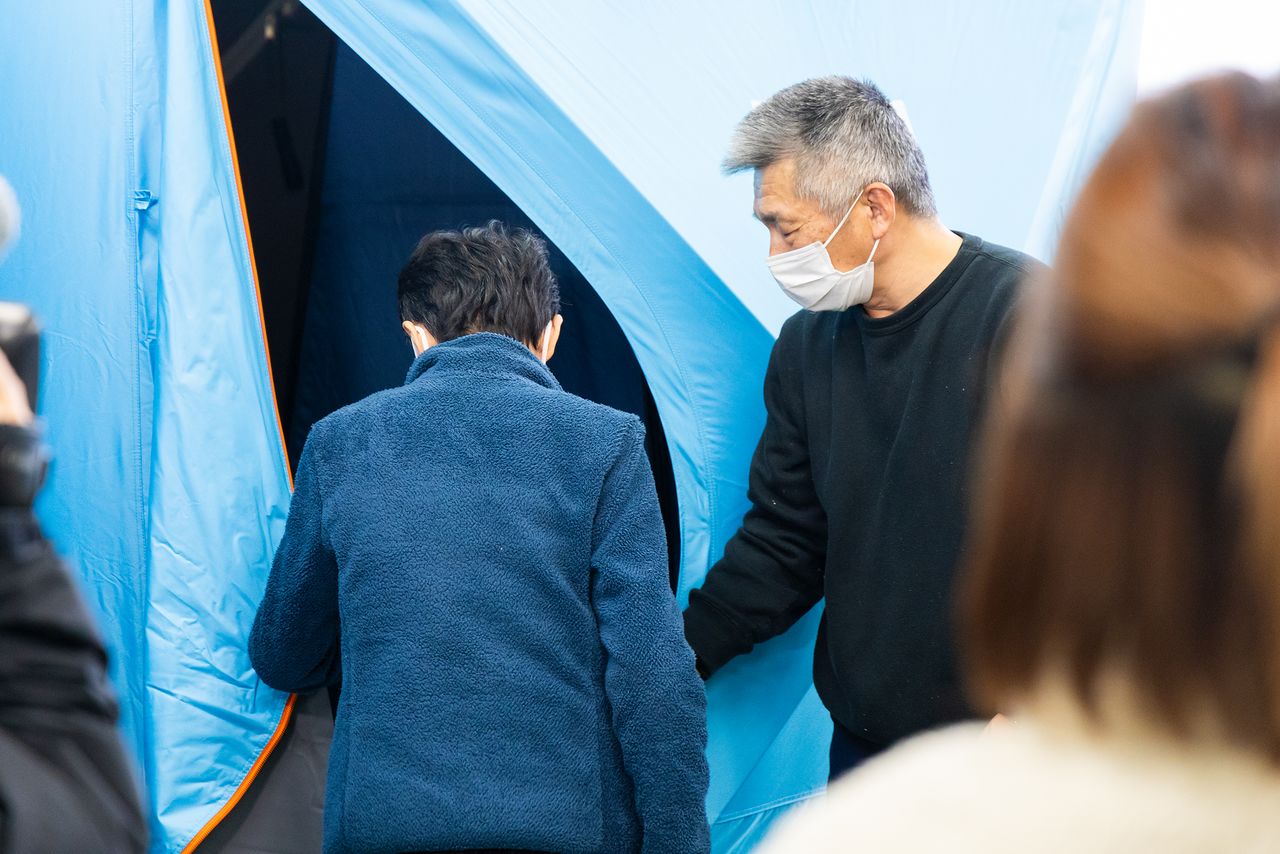
The man looking after the shower room explains how to use the shower to a woman evacuee. (© Hashino Yukinori)
Improving Evacuee Quality of Life
Emergency supplies that did not fit in classrooms were piled up in the corridor at Takojima Elementary. Recently, there have been cases where a support group arrives in a truck, but people refuse their help, saying that they have enough and telling them to carry the goods elsewhere.
One woman soothing her grandchild says, “I’m so glad that we have lots of diapers and powdered milk.” She also said that she was fine sleeping in a classroom, but worried about others in the cold of the gym, and hoped that the showers could help them relax their bodies.

While some people said they had enough supplies, life is still far from comfortable. (© Hashino Yukinori)
With the two weeks that have passed since the earthquake, local needs have started to change, with greater variation between individuals staying in shelters. After getting a more precise picture of the state of the disaster area and what people require, the kind of support for improving the quality of life for evacuees that was mentioned by Unno will increase in importance.
The Nippon Foundation will continue to use its ferry for marine transportation, and plans to build large water purification plants across the peninsula.
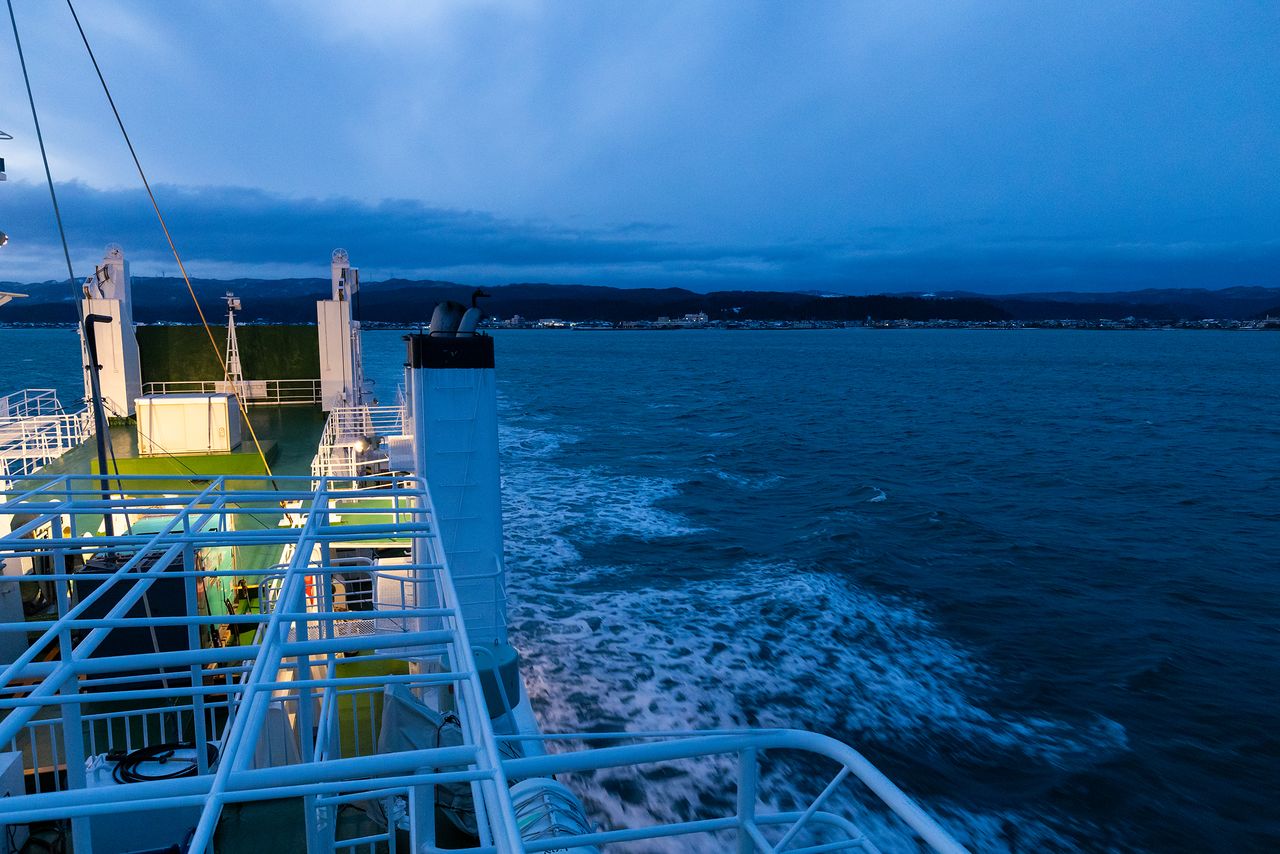
Taken from the ferry after it left Iida Harbor at sunset. The almost total absence of electric light from the town shows the scale of the disaster. (Courtesy Nippon Foundation)
(Originally published in Japanese on January 16, 2024. Banner photo: The Ferry Aguni arrives carrying trucks filled with supplies at Iida Port in Suzu, Ishikawa Prefecture. © Hashino Yukinori.)